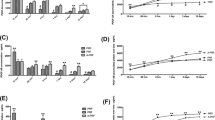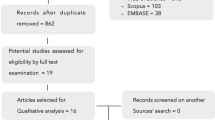Abstract
This study evaluated the impact of peri-implant treatment in the salivary levels of Colony stimulator factor -1 (CSF-1), S100A8/A9 and S100A12 in patients having mucositis or peri-implantitis. As a secondary aim, we analysed the correlation between the salivary and peri-implant crevicular fluid (PICF) levels. Forty-seven patient, 27 having mucositis (mean age 63.11 ± 7.78) and 20 having peri-implantitis (61.25 ± 7.01) participated in the study. Clinical parameters, probing pocket depth, clinical attachment level, % of plaque and bleeding on probing were evaluated. Unstimulated whole saliva was collected from all patients, while PICF was collected only from a patient’s subgroup (n = 20). Samples were collected before and 3 months after peri-implant treatment. Enzyme-linked immunosorbent assays determined levels of CSF-1, S100A8/A9 and S100A12. Clinical parameters improved and salivary levels of CSF-1 and S100A8/A9, but not S100A12, reduced significantly after treatment in both groups. No significant correlation was found in the salivary and PICF levels of the same molecule. In conclusion, the treatment of peri-implant disease significantly improved the clinical parameters and reduced the salivary levels of CSF-1 and S100A8/A9. The salivary expressions of CSF-1, S100A8/A9 and S100A12 did not correlate with their own expression in PICF.


Similar content being viewed by others
References
Lee CT, Huang YW, Zhu L, Weltman R. Prevalences of peri-implantitis and peri-implant mucositis: systematic review and meta-analysis. J Dent. 2017;62:1–12. https://doi.org/10.1016/j.jdent.2017.04.011.
Schwarz F, Derks J, Monje A, Wang HL. Peri-implantitis. J Clin Periodontol. 2018;45(Suppl 20):S246-s266. https://doi.org/10.1111/jcpe.12954.
Renvert S, Persson GR, Pirih FQ, Camargo PM. Peri-implant health, peri-implant mucositis, and peri-implantitis: case definitions and diagnostic considerations. J Periodontol. 2018;89(Suppl 1):S304-s312. https://doi.org/10.1002/jper.17-0588.
Zitzmann NU, Berglundh T. Definition and prevalence of peri-implant diseases. J Clin Periodontol. 2008;35(8 Suppl):286–91. https://doi.org/10.1111/j.1600-051X.2008.01274.x.
Berglundh T, Zitzmann NU, Donati M. Are peri-implantitis lesions different from periodontitis lesions? J Clin Periodontol. 2011;38(Suppl 11):188–202. https://doi.org/10.1111/j.1600-051X.2010.01672.x.
Carcuac O, Berglundh T. Composition of human peri-implantitis and periodontitis lesions. J Dent Res. 2014;93(11):1083–8. https://doi.org/10.1177/0022034514551754.
Marshall D, Cameron J, Lightwood D, Lawson AD. Blockade of colony stimulating factor-1 (CSF-I) leads to inhibition of DSS-induced colitis. Inflamm Bowel Dis. 2007;13(2):219–24. https://doi.org/10.1002/ibd.20055.
Campbell IK, Rich MJ, Bischof RJ, Hamilton JA. The colony-stimulating factors and collagen-induced arthritis: exacerbation of disease by M-CSF and G-CSF and requirement for endogenous M-CSF. J Leukoc Biol. 2000;68(1):144–50.
Lira-Junior R, Teixeira MKS, Lourenco EJV, Telles DM, Figueredo CM, Bostrom EA. CSF-1 and IL-34 levels in peri-implant crevicular fluid and saliva from patients having peri-implant diseases. Clin Oral Investig. 2020;24(1):309–15. https://doi.org/10.1007/s00784-019-02935-8.
Choi IY, Gerlag DM, Holzinger D, Roth J, Tak PP. From synovial tissue to peripheral blood: myeloid related protein 8/14 is a sensitive biomarker for effective treatment in early drug development in patients with rheumatoid arthritis. PLoS ONE. 2014;9(8):e106253. https://doi.org/10.1371/journal.pone.0106253.
Xia C, Braunstein Z, Toomey AC, Zhong J, Rao X. S100 proteins as an important regulator of macrophage inflammation. Front Immunol. 2017;8:1908. https://doi.org/10.3389/fimmu.2017.01908.
van Zoelen MA, Vogl T, Foell D, Van Veen SQ, van Till JW, Florquin S, Tanck MW, Wittebole X, Laterre PF, Boermeester MA, Roth J, van der Poll T. Expression and role of myeloid-related protein-14 in clinical and experimental sepsis. Am J Respir Crit Care Med. 2009;180(11):1098–106. https://doi.org/10.1164/rccm.200810-1552OC.
Wang S, Song R, Wang Z, Jing Z, Wang S, Ma J. S100A8/A9 in inflammation. Front Immunol. 2018;9:1298. https://doi.org/10.3389/fimmu.2018.01298.
Meijer B, Gearry RB, Day AS. The role of S100A12 as a systemic marker of inflammation. Int J Inflam. 2012;2012:907078. https://doi.org/10.1155/2012/907078.
Holmstrom SB, Lira-Junior R, Zwicker S, Majster M, Gustafsson A, Akerman S, Klinge B, Svensson M, Bostrom EA. MMP-12 and S100s in saliva reflect different aspects of periodontal inflammation. Cytokine. 2019;113:155–61. https://doi.org/10.1016/j.cyto.2018.06.036.
Lira-Junior R, Holmstrom SB, Clark R, Zwicker S, Majster M, Johannsen G, Axtelius B, Akerman S, Svensson M, Klinge B, Bostrom EA. S100A12 expression is modulated during monocyte differentiation and reflects periodontitis severity. Front Immunol. 2020;11:86. https://doi.org/10.3389/fimmu.2020.00086.
Jaedicke KM, Preshaw PM, Taylor JJ. Salivary cytokines as biomarkers of periodontal diseases. Periodontol 2000. 2016;70(1):164–83. https://doi.org/10.1111/prd.12117.
Nemunaitis J. Macrophage function activating cytokines: potential clinical application. Crit Rev Oncol Hematol. 1993;14(2):153–71. https://doi.org/10.1016/1040-8428(93)90022-v.
Boyce BF. Advances in the regulation of osteoclasts and osteoclast functions. J Dent Res. 2013;92(10):860–7. https://doi.org/10.1177/0022034513500306.
Han Y, You X, Xing W, Zhang Z, Zou W. Paracrine and endocrine actions of bone-the functions of secretory proteins from osteoblasts, osteocytes, and osteoclasts. Bone Res. 2018;6:16. https://doi.org/10.1038/s41413-018-0019-6.
Croce K, Gao H, Wang Y, Mooroka T, Sakuma M, Shi C, Sukhova GK, Packard RR, Hogg N, Libby P, Simon DI. Myeloid-related protein-8/14 is critical for the biological response to vascular injury. Circulation. 2009;120(5):427–36. https://doi.org/10.1161/CIRCULATIONAHA.108.814582.
Majster M, Almer S, Boström EA. Salivary calprotectin is elevated in patients with active inflammatory bowel disease. Arch Oral Biol. 2019;107:104528. https://doi.org/10.1016/j.archoralbio.2019.104528.
Ometto F, Friso L, Astorri D, Botsios C, Raffeiner B, Punzi L, Doria A. Calprotectin in rheumatic diseases. Exp Biol Med (Maywood). 2017;242(8):859–73. https://doi.org/10.1177/1535370216681551.
Kaner D, Bernimoulin JP, Kleber BM, Heizmann WR, Friedmann A. Gingival crevicular fluid levels of calprotectin and myeloperoxidase during therapy for generalised aggressive periodontitis. J Periodontal Res. 2006;41(2):132–9. https://doi.org/10.1111/j.1600-0765.2005.00849.x.
Carvalho A, Lu J, Francis JD, Moore RE, Haley KP, Doster RS, Townsend SD, Johnson JG, Damo SM, Gaddy JA. S100A12 in digestive diseases and health: a scoping review. Gastroenterol Res Pract. 2020;2020:2868373. https://doi.org/10.1155/2020/2868373.
Funding
The work was supported by the New Research Grant of Griffith University, Queensland, Australia.
Author information
Authors and Affiliations
Contributions
CMSF, EJVL, DMT and RLJ conceived the ideas; MKST and GST collected the data; JMMN, DI, CMSF and EAB analysed the data, and RGN, CMSF, JMMN, MKST and GST led the writing.
Corresponding author
Ethics declarations
Conflict of interest
The authors declare that they have no conflict of interest.
Ethical approval
The study protocol was approved by University Hospital Pedro Ernesto—UERJ, Rio de Janeiro, Brazil (HUPE‐UERJ) (REF: 20220219.4.0000.5259). All procedures performed in the study were in accordance with the 1964 Helsinki declaration and its later amendments.
Informed consent
Informed consent was obtained from all individual participants included in the study.
Additional information
Publisher's Note
Springer Nature remains neutral with regard to jurisdictional claims in published maps and institutional affiliations.
Rights and permissions
About this article
Cite this article
de Mello-Neto, J.M., Teixeira, M.K.S., Teixeira, G.S. et al. Peri-implant treatment reduces the salivary levels of Colony stimulator factor-1 and S100A8/A9. Odontology 109, 540–546 (2021). https://doi.org/10.1007/s10266-020-00570-4
Received:
Accepted:
Published:
Issue Date:
DOI: https://doi.org/10.1007/s10266-020-00570-4




